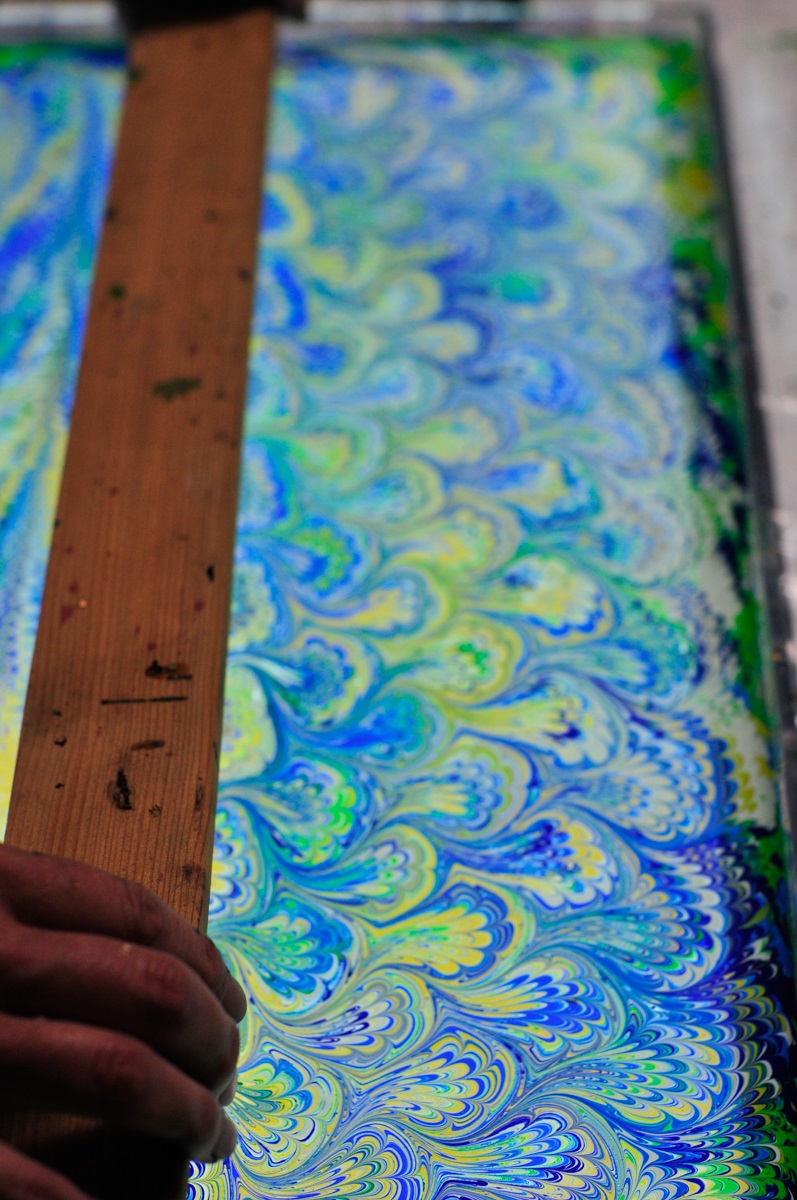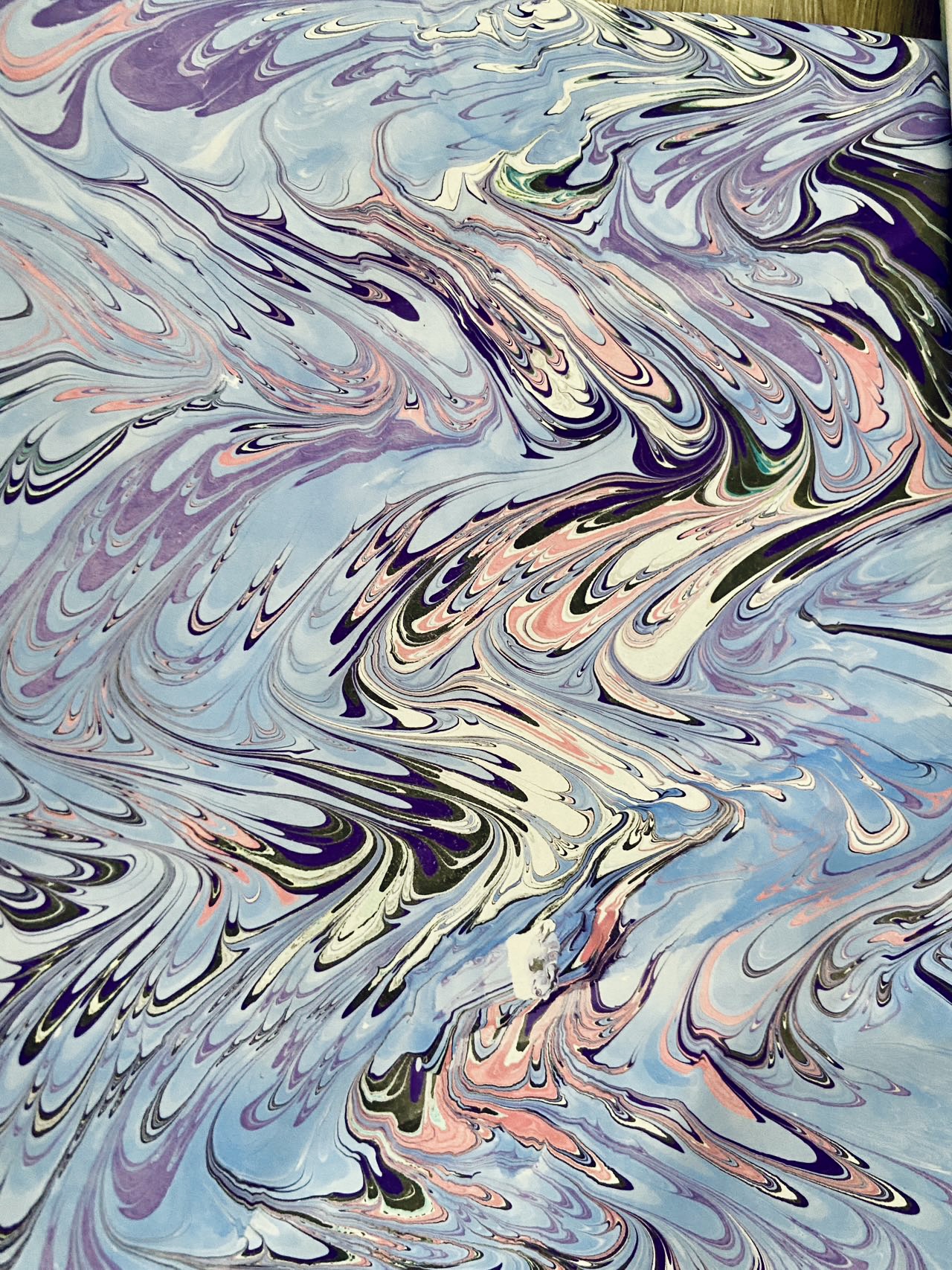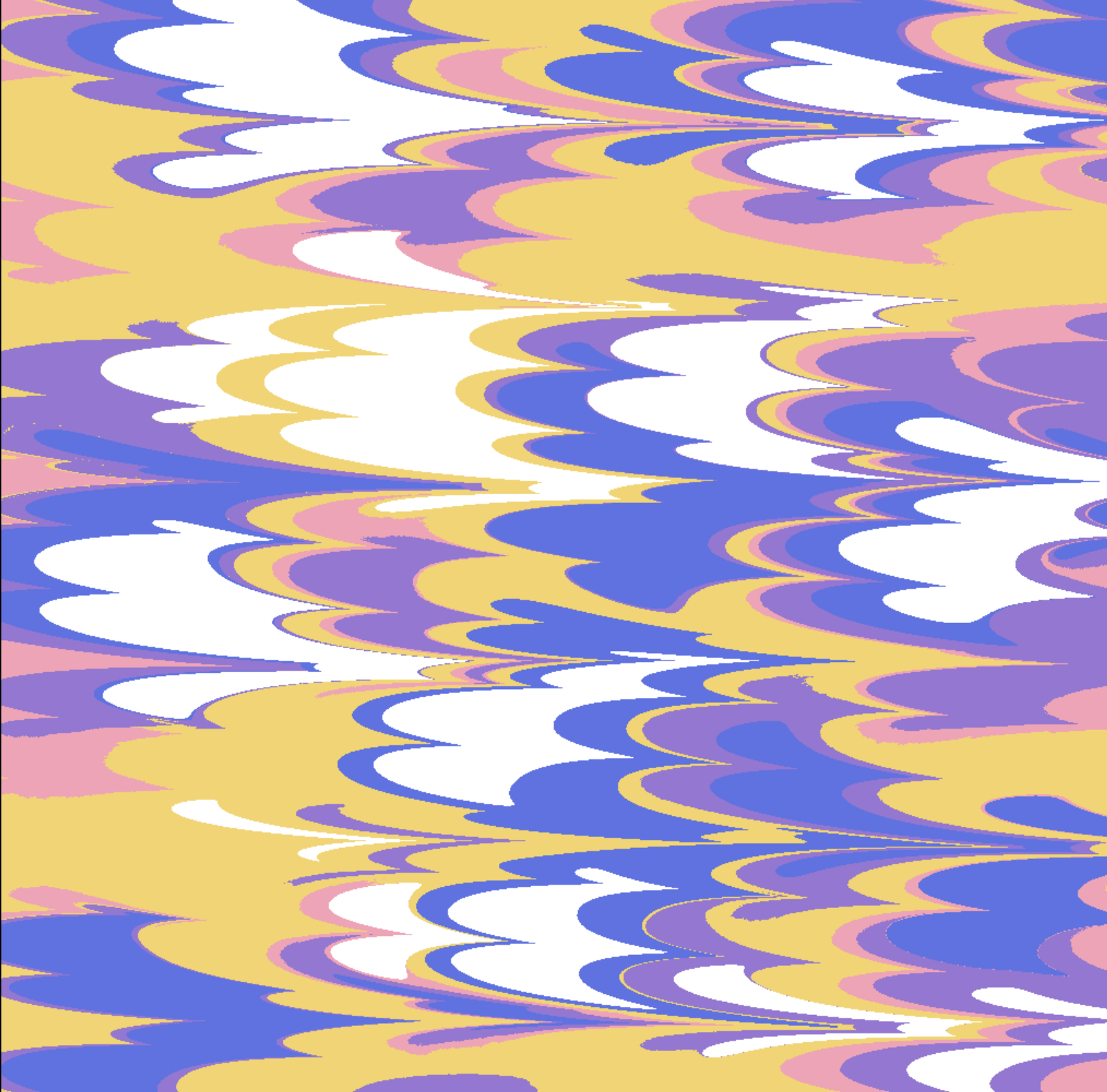My first water marbling piece
It all started at a Maker Fest, where I was in line at one of the stations — Water Marbling. The line was full of parents with their kids, waiting to get their unique art pieces. The line moved slowly, but the wait was never boring — The fluidity of materials (acrylics and thickened water) used in water marbling filled the creating process with uncertainty and surprise. Many people have been simply observing others’ creating process over and over again while waiting.
I would love to see what the water marbling will look like through random color selection and techniques, but I also want my art piece to be something I would be willing to hang on the wall at my apartment. The station owner showcased many pretty patterns in the album. So I went through these patterns, considering which one I should try to make, and went back and forth between showcase and active station to conjecture about which technique could lead to which pattern.

Meanwhile, the mom waiting behind me was also going through the album with her daughter. “Look at these, look at these beautiful colors! Do you want to know how they were made? Which one do you want to make?” As the little girl tracing the patterns with her finger and grouping similar patterns together, mom redirected her to the active station – ‘Look which color he is putting in there first… now he is using the comb, look at how he is moving the comb, isn’t that cool? ’ These questions are very much aligned with the questions I ask myself in my head. I came to see the algorithm development possibly lying beneath the conversation of ‘which one do you want to make?’, ‘how can you make it?’, and ‘What do you need to do first?’
I asked the owner of the station if I could make something similar to a piece from their album. The pattern I intended to make looks like the one below left [1] and below right is my first water-marbling piece.
 |  |
Online Marblizer
I have seen some water-marbling in nail art, latte art, and baking before. To create an ideal pattern with water marbling, we need to determine what colors are needed, where to drop acrylic paints, and the amount of acrylic paints needed at each location. Multiple tools may be used to create patterns, including comb with different spacings. Comb selection and the trace of comb movements relate directly to the resulting pattern.
I tried multiple online marblizers that simulate the actual process of water-marbling and can digitally create water-marbling pieces. It is fairly easy to create a visually appealing artwork with these simulations (below is a quick work I tried with [3]). However, when considering introducing water-marbling to kids with these marblizers, I found most marblizers still lacking some sense of manipulation and authenticity. One reason I noted is that the ‘comb’ tool usually acts globally – which is why the pattern created is usually very visually appealing and organized. But in reality, the comb will act locally, thereby we can see changes in patterns as we move our hand, reflecting our creating process and mistakes.

In response to that, I constructed a more “localized marblizer” building off of Nick Walker’s marblizer [2]. I picked this marblizer to modify since it simulates a great variety of techniques and already has a build-in vector field for visualization. The images below show the resulting vector fields when the comb is moved from left to right. The length of the arrows indicates the impact the comb will have on the field.
 |  |
In the original marblizer (left), the simulation demonstrates a distribution of vector length perpendicular to the direction of movement, while maintaining a uniform length along the direction of movement. In the modified marblizer (right), an additional parabolic scaling effect is applied along the movement direction, giving the comb effect a “locally” look.
I view water-marbling as an interesting context for kids to develop algorithm thinking. However, the intention of bringing this online marblizer to a learning setting is not to completely replace kids’ engagement with the traditional ways of water-marbling. Instead, I view this tool as a space for kids to explore different techniques and create different patterns under a manageable situation with higher authenticity and relatively low cost. The juxtaposition of online marblizer simulation and traditional water-marbling also reveals the critical perspective of computational modeling. My next goal would be to make this online marblizer more authentic through preview interactive.
Reference:
[1] https://www.cloudsonwater.com/#the-courses
